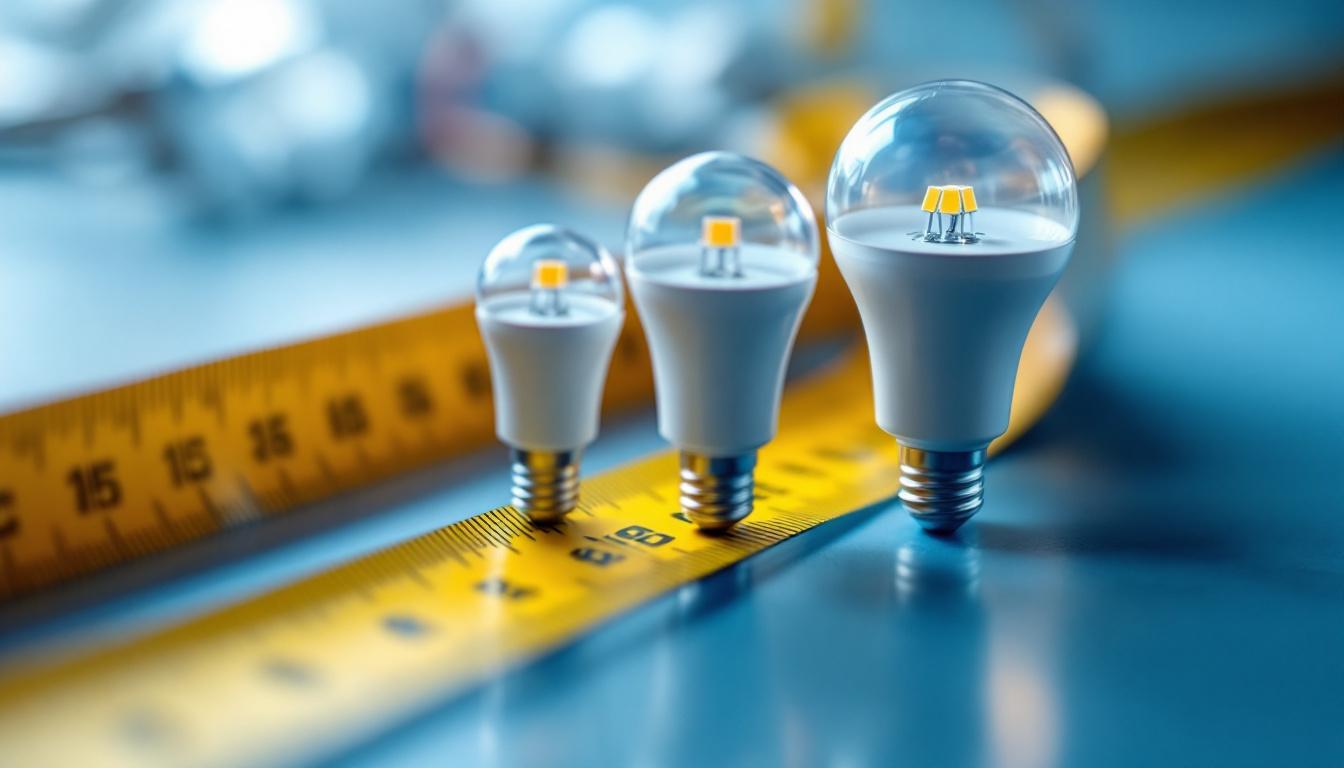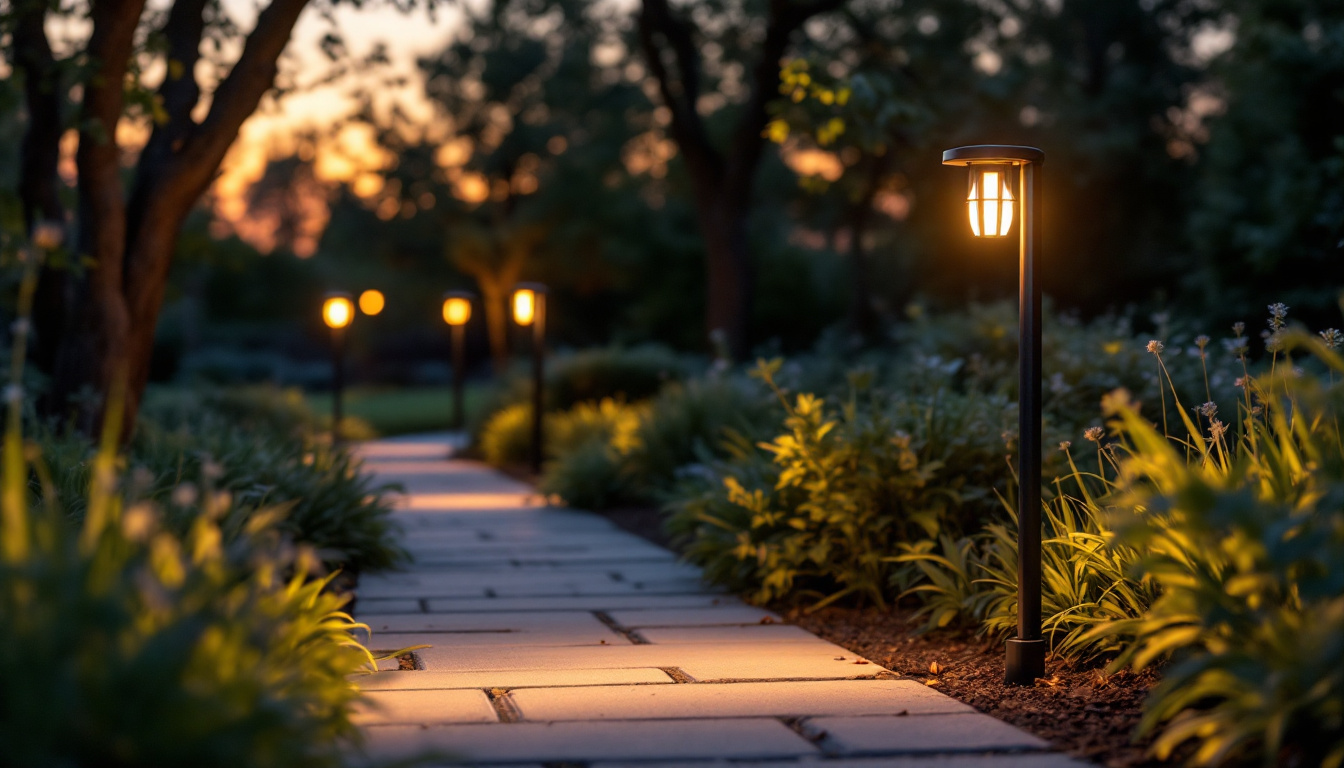
In the evolving world of lighting technology, LED bulbs have emerged as a popular choice for both residential and commercial applications. Their energy efficiency, longevity, and versatility make them a preferred option among lighting contractors. However, understanding the nuances of LED bulbs, particularly their diameter, is crucial for ensuring optimal performance and aesthetic appeal. This article provides essential tips for lighting contractors regarding LED bulb diameter.
The diameter of an LED bulb is a critical factor that influences not only the fit within fixtures but also the overall lighting experience. LED bulbs come in various shapes and sizes, each designed for specific applications. Familiarity with these sizes can help contractors make informed decisions when selecting bulbs for their projects.
LED bulbs are available in several standard shapes, each denoted by a specific code. The most common shapes include A-series, BR-series, PAR-series, and MR-series. The ‘A’ in A-series bulbs stands for ‘arbitrary,’ which refers to the traditional incandescent bulb shape. These are widely used in homes and are available in various diameters, typically ranging from 40mm to 100mm.
BR-series bulbs, or ‘bulged reflector’ bulbs, are designed for recessed lighting and feature a wider diameter, which helps to focus light in a specific direction. PAR-series bulbs, or ‘parabolic aluminized reflector’ bulbs, are often used in track lighting and outdoor applications, providing a more concentrated beam of light. MR-series bulbs, or ‘multifaceted reflector’ bulbs, are commonly used in accent lighting and have a smaller diameter, allowing for precise light distribution.
When it comes to measuring the diameter of LED bulbs, it is essential to understand the conventions used in the industry. The diameter is typically measured in eighths of an inch. For example, a bulb labeled as ‘A19’ has a diameter of 19 eighths of an inch, which translates to approximately 2.375 inches. This measurement is crucial for ensuring compatibility with fixtures and for achieving the desired lighting effect.
Contractors should also be aware that the physical size of the bulb can impact the overall design and functionality of the lighting installation. For instance, larger bulbs may not fit into smaller fixtures, leading to potential installation challenges. Additionally, the size of the bulb can affect the light output and distribution; larger bulbs often produce a wider beam angle, making them ideal for general illumination, while smaller bulbs can create focused spots of light, perfect for highlighting artwork or architectural features.
Furthermore, understanding the size specifications can also aid in energy efficiency considerations. Many LED bulbs are designed to replace traditional incandescent bulbs, and knowing the exact dimensions can help in selecting the most efficient option that meets both aesthetic and functional needs. As energy regulations evolve, more manufacturers are producing LED bulbs that not only fit standard sizes but also offer enhanced features such as dimmability and smart technology integration, which can further influence lighting design choices in modern spaces.
Selecting the appropriate LED bulb diameter is vital for achieving the desired lighting outcome. The choice often depends on the specific application, the design of the fixture, and the overall lighting plan. Here are some key considerations to keep in mind when making this decision.
One of the primary factors to consider when choosing an LED bulb diameter is compatibility with existing fixtures. Many fixtures are designed to accommodate specific bulb sizes, and using a bulb that is too large or too small can result in ineffective lighting or even damage to the fixture. Contractors should always refer to the manufacturer’s specifications for both the fixture and the bulb to ensure a proper fit.
Additionally, the aesthetic aspect of the installation should not be overlooked. A bulb that is too large for a fixture can disrupt the visual balance of the space, while a bulb that is too small may not provide adequate lighting. Striking the right balance is essential for both functionality and design. Furthermore, consider the color temperature of the LED bulbs, as this can also influence the perceived size and brightness of the light. Warmer tones tend to create a cozy atmosphere, while cooler tones can enhance the feeling of spaciousness, making the choice of diameter even more critical in achieving the desired ambiance.
The intended use of the space also plays a significant role in determining the appropriate bulb diameter. For instance, areas requiring focused lighting, such as task areas in kitchens or offices, may benefit from smaller diameter bulbs that provide a concentrated beam. In contrast, larger diameter bulbs may be more suitable for ambient lighting in living areas or commercial spaces.
Contractors should assess the lighting requirements of each project and consider how the diameter of the LED bulb will impact the overall illumination. This may involve a combination of different bulb sizes to achieve a cohesive lighting design. Additionally, it is essential to think about the height of the ceiling and the layout of the room. Higher ceilings may necessitate larger bulbs to ensure that light reaches the intended areas effectively, while lower ceilings might benefit from smaller, more compact bulbs that provide a more intimate lighting experience. The interplay between bulb diameter, ceiling height, and room layout can greatly enhance the overall functionality and aesthetic appeal of the space.
The diameter of an LED bulb can significantly influence the quality of light produced. Factors such as beam angle, brightness, and color temperature are all affected by the size of the bulb. Understanding these relationships can help contractors select the right bulbs for their projects.
Beam angle refers to the width of the light emitted from a bulb. Generally, smaller diameter bulbs tend to have narrower beam angles, which can create focused lighting ideal for highlighting specific areas or objects. Conversely, larger diameter bulbs often produce wider beam angles, making them suitable for general illumination.
Contractors should consider the desired beam angle when selecting bulb diameter. For example, in a retail environment where products need to be highlighted, a smaller diameter bulb with a narrow beam angle may be preferred. In contrast, for a large open space, a larger diameter bulb with a wider beam angle may be more effective in providing even lighting.
Brightness, measured in lumens, is another critical factor influenced by bulb diameter. Generally, larger bulbs can produce higher lumen outputs due to their increased surface area for emitting light. However, it is essential to balance brightness with energy efficiency. Contractors should look for LED bulbs that provide the desired brightness level while maintaining high efficacy, which is the ratio of lumens produced per watt consumed.
When selecting bulbs, it is advisable to compare the lumen output and wattage of different sizes to find the most efficient option for the project. This not only ensures adequate lighting but also contributes to energy savings over time.
The lighting industry is continually evolving, with new trends emerging that influence the design and use of LED bulbs. Awareness of these trends can help contractors stay ahead of the curve and provide innovative solutions to their clients.
One notable trend is the move towards more compact bulb designs. As technology advances, manufacturers are creating smaller, more efficient LED bulbs that can fit into tighter spaces without sacrificing performance. This trend is particularly beneficial for applications where space is limited, such as in decorative fixtures or under-cabinet lighting.
Contractors should keep an eye on these compact options, as they can offer greater flexibility in design and installation. Smaller bulbs can also enhance the aesthetic appeal of fixtures, allowing for more creative lighting solutions.
Another significant trend is the integration of smart technology into LED bulbs. Many modern LED bulbs now come equipped with smart features, such as adjustable color temperature and dimming capabilities. These features can be influenced by the bulb’s diameter, as larger bulbs may offer more advanced technology due to their increased size.
Contractors should consider the benefits of smart lighting when selecting bulb diameter. Offering clients the option for smart bulbs can enhance their lighting experience and provide added convenience and energy savings.
Proper installation is crucial for maximizing the performance and lifespan of LED bulbs. Here are some tips for lighting contractors to ensure a successful installation process.
Before installing LED bulbs, it is essential to verify compatibility with the fixtures. This includes checking the wattage, voltage, and size specifications. Using bulbs that do not match the fixture’s requirements can lead to performance issues or even damage.
Additionally, contractors should ensure that the fixtures are in good condition and suitable for LED technology. Some older fixtures may not be designed to accommodate the unique characteristics of LED bulbs, which can affect their performance.
Every LED bulb comes with specific installation guidelines provided by the manufacturer. Following these guidelines is crucial for ensuring optimal performance and safety. This includes proper handling, installation techniques, and recommendations for use.
Contractors should take the time to read and understand these guidelines, as they often contain valuable information regarding the bulb’s capabilities and limitations. Adhering to these instructions can prevent issues down the line and enhance customer satisfaction.
Understanding LED bulb diameter is essential for lighting contractors looking to provide optimal lighting solutions. By considering factors such as fixture compatibility, lighting requirements, and the impact of diameter on light quality, contractors can make informed decisions that enhance their projects.
Staying abreast of trends in LED technology, such as compact designs and smart lighting integration, can also provide contractors with a competitive edge. Ultimately, the right choice in LED bulb diameter can lead to improved lighting performance, energy efficiency, and customer satisfaction.
Ready to enhance your lighting projects with the right LED bulb diameters and the highest quality products? Look no further than LumenWholesale. Our spec-grade lighting solutions are designed to meet the demands of lighting contractors who value performance and affordability. With our direct-to-contractor pricing, you’ll enjoy the best value without the middleman markups. Plus, with free shipping on bulk orders, you can stock up on premium lighting solutions that meet the highest industry standards. Elevate your lighting game and discover wholesale lighting at the best value today!

Unlock the secrets of Baselite Lighting with our comprehensive guide tailored for lighting contractors.

Discover how solar-powered LED lights are revolutionizing the lighting industry, offering sustainable and cost-effective solutions for contractors.

Discover the essential insights into path lighting with answers to the most common questions lighting contractors face.

Discover how United’s acquisition of QSSI is set to revolutionize the lighting industry.